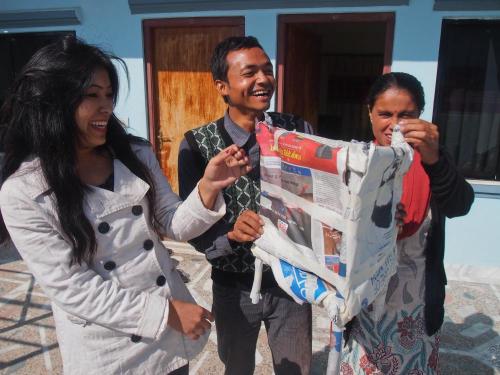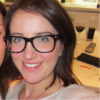
What’s in a story? Why is there storytelling in almost every community across the globe? Why do we continue to want to make sense of ourselves and our lives through sharing stories about ourselves and others? Think of the grandmother who tells stories about her experiences in the Second World War to her grandchildren; the village elder who shares stories of the great drought with the young men of his village; or the young girl who shows solidarity with the people of the bombings in Baghdad by sharing a video of someone’s story on facebook. We all tell and share stories. Stories help us to make sense of this beautiful, overwhelming, intimmidating and exciting world around us.
At Moving Stories supporting people to make sense of their experiences through telling and sharing stories is what makes us tick. We have conducted workshops in different countries across the globe that support people to tune in with their own individual or community storytelling cultures and tell others about their lives in their own words. In this day and age, a story on a piece of paper, or shared orally, does not always have the impact it deserves. With facebook, twitter and all the other social media portals we share so much of ourselves with our community and the wider world. Making our stories digital and to the point enables our voices to be heard by a much wider audience than before.
The act of creating and shaping stories about our lives, gives us the space to reflect on and to make sense of what has happened to us. It helps us to understand how different parts of our lives relate to each other, and to learn why and how change happened. For example, in a workshop in Kenya, participants told personal stories that explored the varied and complex interplay of factors that had led to conflict in their communities, including climate change and the individual purchase of land that left little land remaining for communal grazing pastures. Supporting communities and the organisations they may work with to understand what is happening in the world around them and why, is an essential starting point to finding workable solutions that are owned by members of the community.
Stories also allow us to explore the emotions and feelings that can inform and influence our actions. This is often difficult to capture using more traditional reserarch methods. In one workshop, a teacher from Nepal who had been working with an international volunteer described the very personal transformation she had experienced: “I felt like I was a tree with dried up leaves.. and then everything changed, and the leaves became green again.”
During a Moving Stories workshop, we use a range of methods that allow people to explore their own individual or community stories. We give the space for people to be creative and to feel safe to think about their emotions and experiences. We help people to express themselves verbally, by writing, but also visually. For example, providing a digital camera, a voice recorder, creative materials, exercises and games that can give the storyteller the freedom to tell their stories in different ways. In one workshop, the women participants found it easier to draw what it felt like to be powerless in their homes, where men held the decision making power.
Creating a Digital Story by joining voice, imagery and music or sound into a short ‘movie’ of a few minutes in length, allows the storyteller to combine different ways of expressing and communicating. Making the stories into Digital Stories, also means that they can be heard more widely. Whether at small informal community gatherings, at official meetings in formal spaces or internationally at conferences or on the internet, their impact can be far-reaching. Silas, a shepherd from Africa, shared his story at a global gathering of indigenous communities; Laja shared her story at a local government meeting; Habiba and Laxmi used their stories to try to bring awareness amongst authorities of injustices carried out in their communities; organisations have used Digital Stories to share the impact of their projects on the communities they work with.
And what happens when we hear stories? Stories allow us to take a few steps in someone else’s shoes. For example, at the end of his story, shepherd Jeremiah admits, “I go to bed each night, wondering, hoping, when will morning come?” When I first heard his story, I felt for a few moments what it was like to live in constant fear of violence. It brought to life the reports that showed high levels of violent crime that had increased in recent years in his community.
To achieve social change we need to first provide people with the spaces and tools to make sense of their own reality. We need to create opportunities for people to speak and express themselves in their own way and in their own words. And we need to ensure that we can really listen to and understand what is being said. Digital Storytelling is a powerful tool that gives great opportunities for a variety of voices to be heard & understood, allowing action to be taken that is based on an in-depth understanding of on-the-ground realities.
If you would like to learn more about Digital Storytelling and its many applications, join us on the 21st and 22nd July 2016 for a unique two day workshop. No previous experience or technical expertise is required, and there are still a few places left. For more information and to book your place: contact@movingstories.info // www.movingstories.info








7d88.png?itok=KI18yp23)

Add new comment